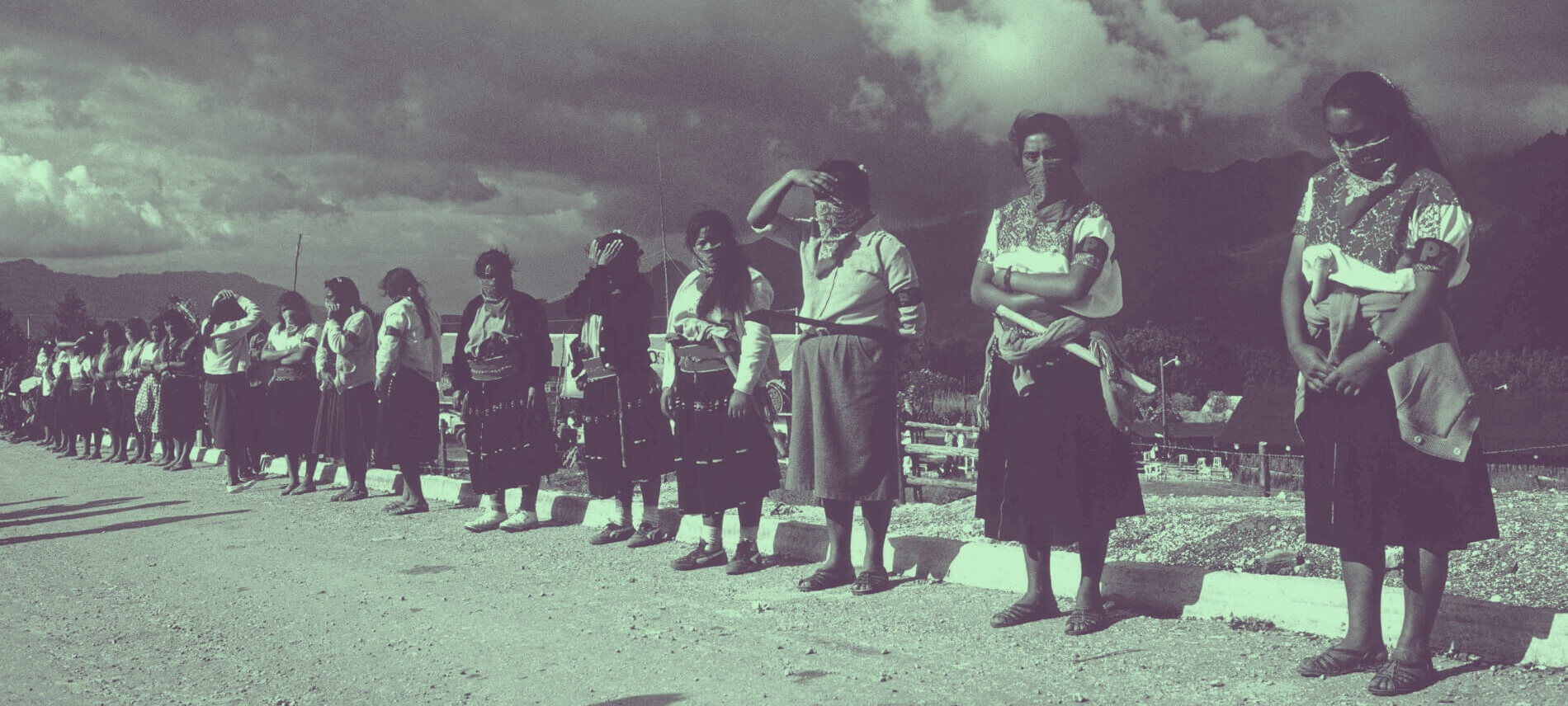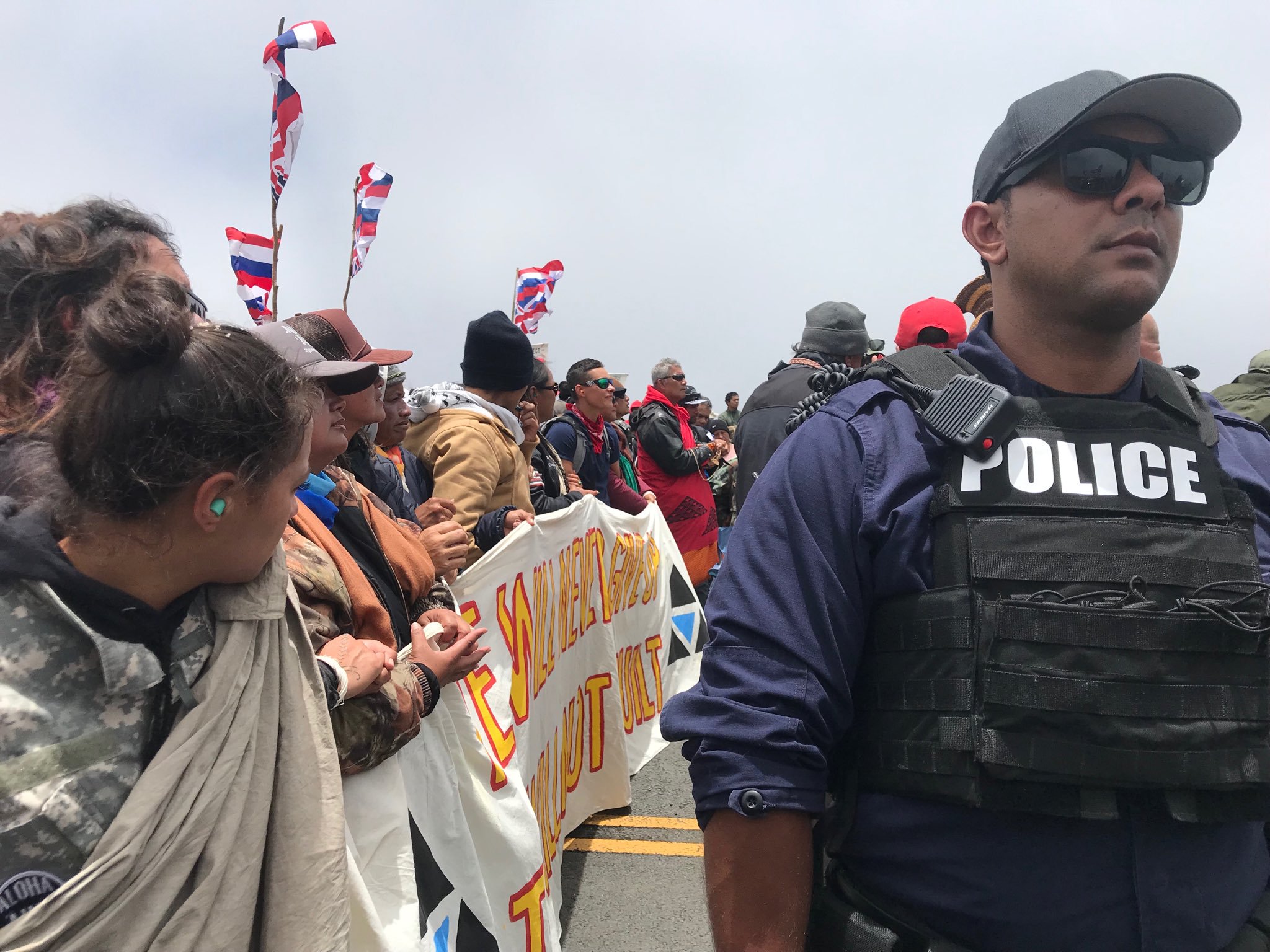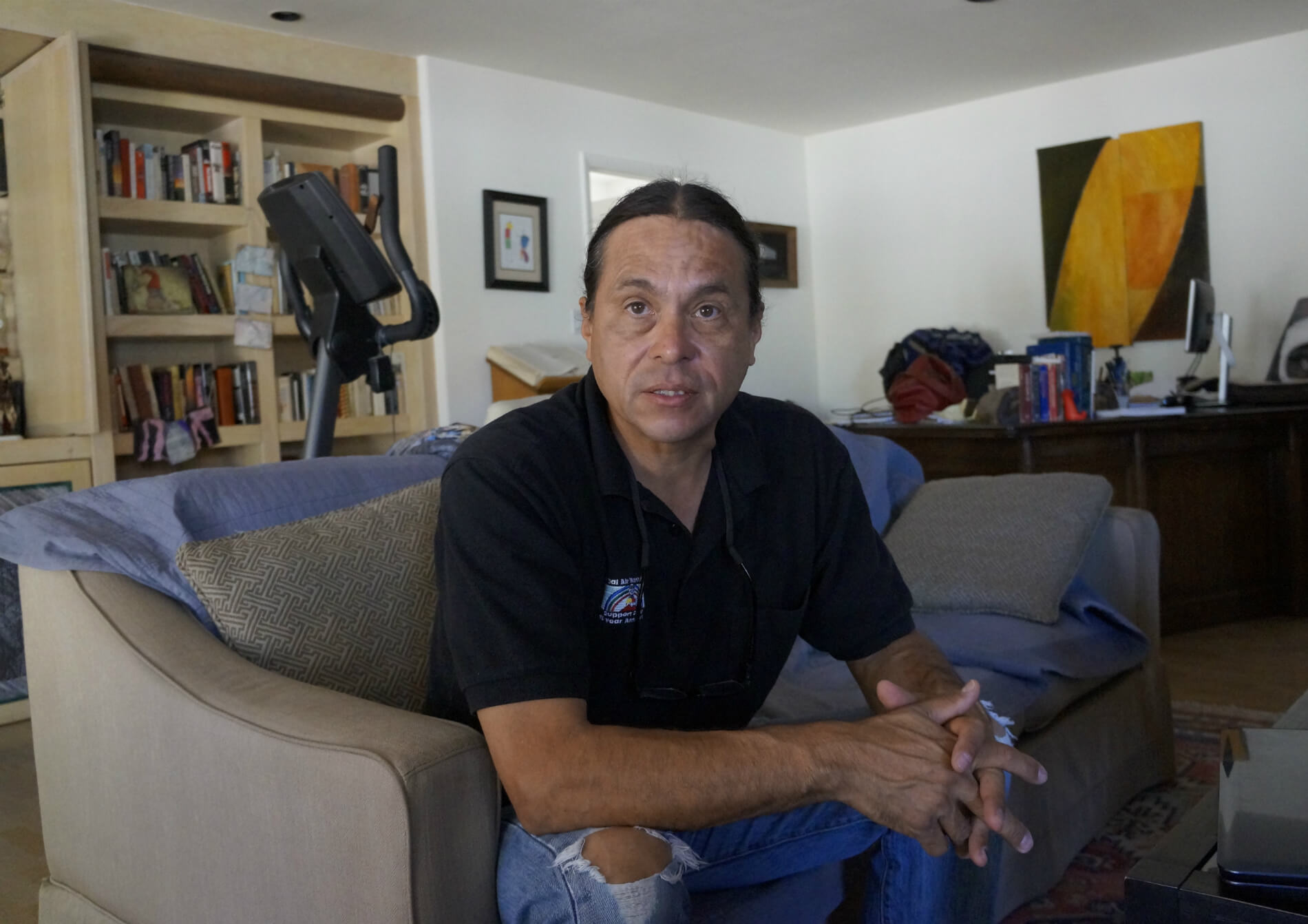
The Indigenous Rights Report is a weekly crash course on everything in the indigenous world.
Make this podcast happen! Support us on Patreon!

In this week’s Indigenous Rights Report:
- New bills could rein in mining on tribal lands near the Grand Canyon;
- Indigenous peoples are finding a voice on Guatemalan airwaves;
- UN offers advice to support New Zealand’s implementation of the UN Declaration on the Rights of Indigenous Peoples;
- Wolastoqey Chiefs condemn a decision to dump mine waste into two rivers;
- Trump administration is trying to revive the Yucca Mountain Nuclear Waste site;
- Guatemala orders the provisional suspension of CGN nickel mine in El Estor;
- Lummi Nation requests a sovereign-to-sovereign meeting with Canadian Prime Minister Trudeau;
- Indigenous Guardians get $6.4 million to monitor traditional territories;
- Hydro One secures a court order to bar Indigenous protesters from Caledonia work site;
- Hawaii declares state of emergency amid protests over huge telescope;
- Native American representation expands on repatriation panel;
- OECD calls for the creation of Indigenous financial institutions;
- The Queensland Government signed a historic joint Statement of Commitment;
- The Peruvian Government meets Indigenous peoples over seizure of Petroperú pumping station;
- The Flagstaff Red Screen Film indigenous Festival will launch next week.
Democratic lawmakers advanced new bills to restrict mining around the Grand Canyon and on tribal lands in Arizona and New Mexico. The House Natural Resources Committee gave preliminary approval to bills banning mining on 1 million acres around the Grand Canyon, taking uranium off the list of “critical minerals” and setting a 10-mile mining buffer around Chaco Canyon. Rep. Deb Haaland, D-New Mexico, pointed to the cultural and sacred sites that would be protected by the bills, noting that tourism and outdoor recreation offer greater economic potential for the region than mining would. Haaland said that the measures will also protect the health of area residents after decades of mining on the Navajo Nation left a “toxic burden” that shows up in higher risks of cancer.

Ram Dancers known as Guardians of the Grand Canyon pictured in front of sacred Red Butte. The Ram Dance is a recently revived tradition the Havasupai stopped practicing over 100 years ago. Photo: Garet Bleir
The uranium bill would reverse a Trump administration plan that put it on a list of non-fuel minerals that are critical to the nation’s economy and defense, and could be threatened if imports from other countries were cut off.
Despite government opposition, community radio stations are helping Indigenous communities in Guatemala share their stories. The Asociación Mujb’ab’l Yol (“Mujb’ab’l Yol” means “Meeting of Ideas” in the Mam Maya language) is a network of radios comunitarias that spans six departments, or states, in Guatemala’s mountainous southwest, where the majority of the population is Indigenous Maya. Despite constituting 40 percent of this Central American country’s population, Guatemala’s Indigenous peoples are rarely represented in their country’s media. Radios comunitarias are local, volunteer-run, Indigenous-language radio stations that fill this media void, giving this large, but often silenced, minority a chance to be represented and heard. The government refuses to legalize them on the grounds that they “use unused frequencies.”
Radios comunitarias like those in Asociación Mujb’ab’l Yol are comprised of socially conscious programming, presented in both Spanish and Indigenous languages, with content designed to raise awareness of political issues in marginalized Indigenous communities.
United Nations Indigenous Experts released a report to support New Zealand’s implementation of the UN Declaration on the Rights of Indigenous Peoples. The Advisory Note was produced by a UN expert body on Indigenous Peoples’ rights, known as the EMRIP, to help New Zealand develop an action plan to implement the UN Declaration.
The Advisory Note covers issues such as: self-determination; participation and partnership; health, education and justice; and systemic challenges and barriers that need to be addressed. The Advisory Note will be used as work is progressed on a national action plan for the UN Declaration.
Five Wolastoqey Chiefs have issued a statement condemning the Canadian government’s approval of a plan to dump toxic mine waste from the Sisson Mine into two rivers in Wolastoqey territory. The chiefs explain that the lands and waters of the Wolastoq (St. John River), including the area to be developed by the Sisson Mine, have historically been, and continue to be, used by the Wolastoqey for hunting, gathering, fishing, trapping, tree harvesting, subsistence, spiritual and related purposes. The two rivers are also an important habitat for endangered Atlantic Salmon and other fish species.
The chiefs went on to say that they were expecting “a further engagement” that would take place before any decision was made and that a final decision would not come until after the 2019 federal election.
The Trump administration is trying to revive the controversial Yucca Mountain Nuclear Waste site. The project faces resistance from environmental groups and native communities. A number of native nations (including the Western Shoshone, the Moapa Paiute, and the Las Vegas Paiute) reside less than 100 miles from the Nevada Test Site and the planned Yucca Mountain Nuclear Waste Site.

Ian Zabarte, principal man of the Western Shoshone Nation, has spent 30 years defending his community against the controversial Yucca Mountain Nuclear Waste site. Photo: Derrick Broze
According to Robert Halstead, executive director of the Nevada Agency for Nuclear Projects, the project “contradicts the foundational principle of geologic disposal” because the site itself “must prevent the radioactive contamination of groundwater in the accessible environment for tens of thousands to a million years”. Halstead said that the state of Nevada has filed 218 legal challenges to the license application before the Nuclear Regulatory Commission and plans to file 30 more.
Senator Lisa Murkowski of Alaska is sponsoring a bill that would create a new government agency in charge of handling nuclear waste. The bill also calls for including local consent to become part of the decision-making process. However, the bill does not guarantee residents a veto to stop potentially dangerous nuclear waste sites in their community.
Guatemala has ordered the provisional suspension of CGN’s nickel mine in El Estor. The mine is tied to serious environmental contamination, murder, gang rape and criminalization. Campaigners say full consultation was not carried out before the 2014 reopening of the Fenix site, owned by the Switzerland-based company Solway. The constitutional court said it had decided to uphold a further demand from campaigners to temporarily halt operations until the conclusion of the legal battle over consultation. Solway is appealing against the ruling that it should consult the community. A hearing on the issue is scheduled for July 25.
Fenix is near the town of El Estor, on the shores of Lake Izabal, Guatemala’s largest expanse of fresh water. The lake is an important breeding ground for wildlife. The lake’s fish are a source of food and income for local people. In the hills above Izabal, there are about 20 Maya villages.
The Lummi Nation has taken diplomatic action to resolve the international dispute arising from Canadian projects that harm Lummi’s territory in the Salish Sea. The démarche was sent, as per protocol, in the form of a letter from Lummi Nation Secretary Lawrence Solomon to Canada’s Minister of Foreign Affairs, the Honourable Chrystia Freeland.

The Lighthouse Park in Mukilteo, Washington, where the Treaty of Point Elliot was signed in 1855. The treaty established the Suquamish Port Madison, Tulalip, Swin-a-mish (Swinomish), and Lummi reservations. Photo by Joe Mabel
Despite accepting comments and hearing testimony from First and Tribal Nations, the Canadian government hasn’t taken adequate steps to protect the Salish Sea and all that it holds. Lummi has spiritual connections, Treaty rights, cultural sites, economies, fisheries, and qwe’lhol’mechen that are a part of the Salish Sea. Secretary Solomon of Lummi Indian Business Council stated that “The Lummi Nation is in a state of emergency: orca relations are dying, salmon are disappearing, the people are suffering, and their way of life in peril.”
Indigenous Guardians are getting $6.4 million to monitor traditional territories. The federal government has boosted its investment in Indigenous-led conservation projects across the country, announcing it will commit $6.4 million into 22 projects. The funding is for the Indigenous Guardians pilot program, which began in 2017 with a $25 million announcement and now encompasses 40 programs across the country.
The Guardians projects put local Indigenous people on the land to monitor and protect their traditional territories. Of the 22 newly funded projects, most are in the northern territories and northern parts of the provinces.
Hydro One has secured a court order to bar Indigenous protesters from the Caledonia work site. The Haudenosaunee Chiefs Confederacy Council called the injunction a ‘sneaky, disgusting move.’
Hydro One wants to complete a 76-kilometre, 230-kilovolt transmission line along rights-of-way between transformer stations in Thorold and just outside Caledonia. Aaron Detlor, a lawyer and confederacy adviser, said Hydro One’s transmission line is on Haudenosaunee land, which is subject to a treaty with the Crown. The hydro project was put on hold during a heated land claims dispute more than a decade ago.
Hawaii declared a state of emergency amid protests over the planned construction of the Thirty Meter Telescope in Hawaii. Astronomers say that building the largest and most powerful visible-light telescope ever, atop the dormant volcano Mauna Kea, will revolutionize our view of the universe. But many Indigenous peoples in Hawaii say that the project is steamrolling their culture, literally and figuratively. According to the Office of Hawaiian Affairs, “Mauna Kea is a deeply sacred place that is revered in Hawaiian traditions. It’s regarded as a shrine for worship, as a home to the gods.” Its land is also an important natural resource.

Photo: twitter
More than 500 astronomers and students have signed an open letter denouncing the criminalization of protesters and the forceful building of the telescope despite objections from Indigenous peoples in Hawaii.
Native American representation is expanding on a repatriation panel in California, thanks to a new law that gives California Native Americans equal representation on a committee that decides the fate of their ancestors’ human remains and cultural items. The bill added a tribal voting member to the committee, which will consist of four tribal members and four voting members from the University of California. Three of the tribal members will be from federally recognized tribes and one will not. There is also one non-voting member from each UC campus subject to the federal Native American Graves Protection and Repatriation Act.
The University of California Native American Graves Protection and Repatriation Act Committee was established in 2001, giving appointees “powers to mediate disputes, subpoena, and to levy civil penalties”. By law, at least two of the four UC voting members on the committee must be associated with a Native American studies program.
A landmark international report by the Organization for Economics Cooperation and Development (OECD) has called on governments to help create Indigenous-owned financial institutions to boost entrepreneurship and better link their people to regional development. The OECD report also called for improvements to statistics and highlighted the lack of measurement of issues that are important to Indigenous peoples, such as kinship relations, transmission of traditional knowledge and language.
The study by OECD compared the well-being of Indigenous communities at national and subnational levels in five advanced OECD member countries: the United States, Australia, New Zealand, Mexico, and Canada.
The Queensland Government signed a historic joint Statement of Commitment as part of the Tracks to Treaty – Reframing the relationship with Aboriginal and Torres Strait Islander Queenslanders initiative. Member for Cook, Cynthia Lui said moving towards a more collaborative partnership would help deliver outcomes better suited to each community’s unique needs. “This is a truly historic moment in that it gives recognition and greater voice to Aboriginal and Torres Strait Islander peoples right throughout Queensland,” Ms Lui said.
An Eminent Panel of Aboriginal and Torres Strait Islander Queenslanders and Indigenous Queenslanders will provide leadership to deliver on this commitment in the best interests of all Queenslanders. A Treaty Working Group will lead state-wide consultation and engagement beginning in the second half of 2019, as part of developing the Path to Treaty process.
The Peruvian Government met with Indigenous peoples over the seizure of a Petroperú pumping station. Representatives of the Peruvian government were due to meet on Thursday with indigenous communities that have seized control of station 5 on the Nor Peruano Oil Pipeline (ONP), according to the head of social management at state-owned firm Petroperú, Beatriz Alva.
Since July 6, around 400 Indigenous peoples have occupied the station’s facilities in the Loreto Amazon region. The Indigenous peoples are demanding payments and financial compensation for the use of their lands, as well as the fulfillment of previous promises of benefits from authorities.
The Flagstaff Red Screen Film Festival celebrating indigenous voices will be launched next week. The festival screens films produced, directed or starring indigenous people. Tsosie, Associate Librarian at NAU’s Cline Library and co-director for the festival, said that “I hope the films we’re showing communicate to the indigenous community that there is this whole genre of film that’s out there and it’s about them and made for them and telling their stories. You think about representation and just communicating that, ‘You’re important and your existence is recognized and seen’.”
The five-day festival, which includes documentaries, shorts and full-length feature films, is a collaboration between Northern Arizona University and the University of Arizona, and co-presented by NAU Cline Library and UA’s Hanson FilmTV Institute. Its organizers hope to make it a biennial event. Flagstaff is home to several tribes and just 45 miles from the Navajo Nation. Several films will likely also travel to the nearby Navajo Nation and Hopi reservation this November.
This is the Indigenous Rights Report.

Indigenous Peoples are putting their bodies on the line and it's our responsibility to make sure you know why. That takes time, expertise and resources - and we're up against a constant tide of misinformation and distorted coverage. By supporting IC you're empowering the kind of journalism we need, at the moment we need it most.